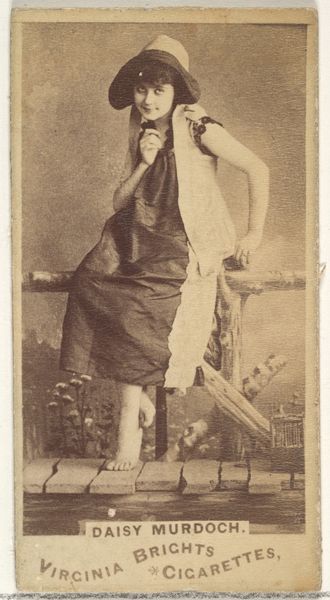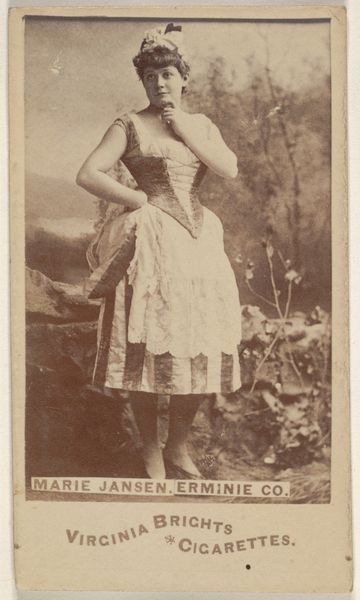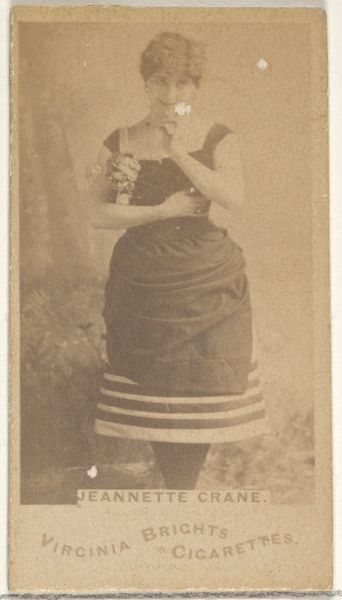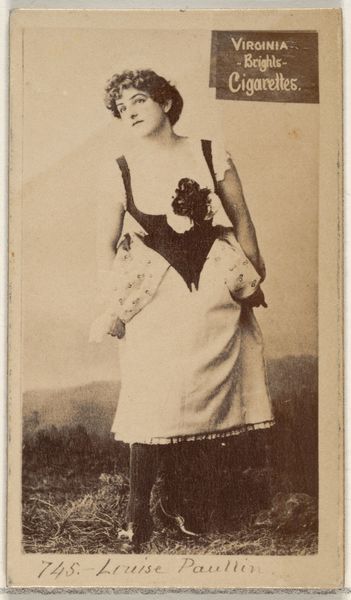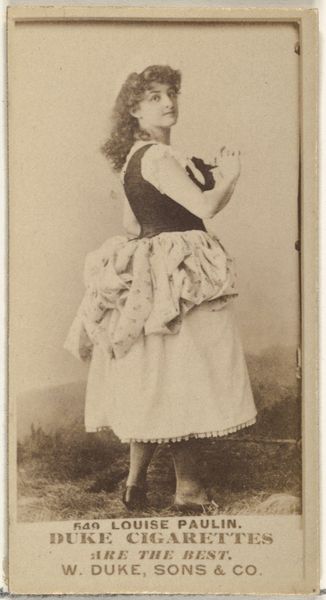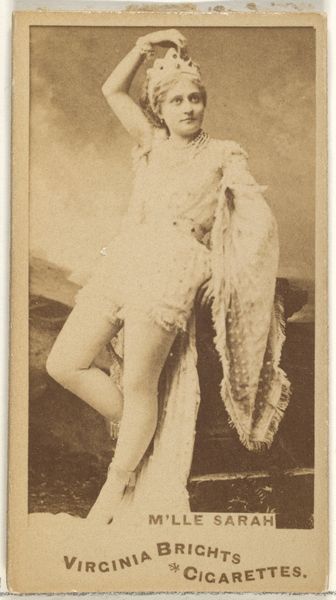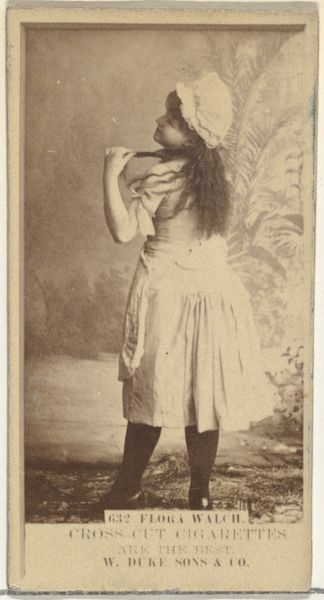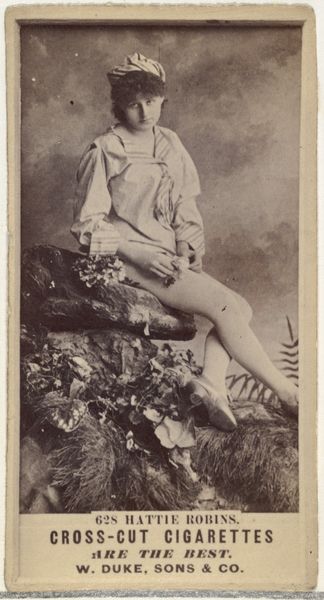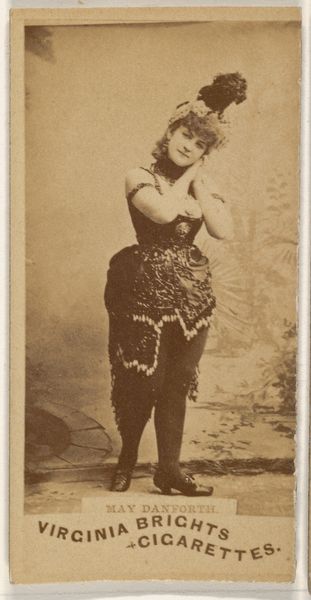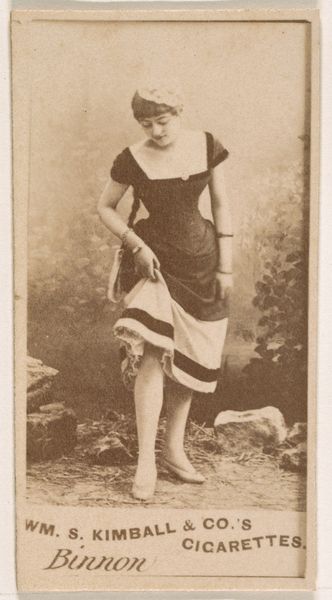
Daisy Murdoch, from the Actors and Actresses series (N45, Type 1) for Virginia Brights Cigarettes 1885 - 1891
0:00
0:00
drawing, print, photography
#
portrait
#
drawing
#
pictorialism
# print
#
photography
#
19th century
#
genre-painting
Dimensions: Sheet: 2 3/4 x 1 3/8 in. (7 x 3.5 cm)
Copyright: Public Domain
Editor: This is "Daisy Murdoch, from the Actors and Actresses series" made between 1885 and 1891. It's a photography print by Allen & Ginter, meant for Virginia Brights Cigarettes. It’s captivating but a little… odd. The figure is posed in such an affected way. What symbolic meaning do you find in this portrait? Curator: Well, observe the way Daisy's hand gently touches her neck – it’s not merely a pose but a carefully crafted gesture. This speaks to a vulnerability but also a carefully constructed persona, both aspects of performance. Such stylized gesture were crucial to how 19th century people were communicating through their body language. These cards also acted as visual echoes and records of a collective memory, didn't they? They created a bridge, allowing viewers to engage with this image beyond simple recognition. Editor: That's interesting. So you’re saying the gesture itself has cultural weight, beyond just being “pretty”? Curator: Exactly. Each accessory carries significance – the scarf is draped in such a way as to invoke freedom and also display elegance, the cap suggests something more mundane and approachable than one would imagine for an actress, challenging conventions and expressing multifaceted sides of her personality. Ask yourself: what stories does this image invite the viewer to imagine, beyond simple celebrity? Editor: It makes me think about the gaze. She’s not exactly looking *at* the viewer, but slightly past us, like she’s preoccupied. It's an interesting effect, the contrast between the staged setting, which hints at a theatrical realm, with this feeling of distractedness in her gaze. Curator: Indeed. The offset gaze invites reflection. These aren't candid shots; they're curated identities made accessible. Consider, too, how they helped cement and propagate ideas about beauty, performance, and identity across the rapidly changing cultural landscape of the late 19th century. The mass production also allowed those with more modest resources a peak into another world of high society, didn't it? Editor: It definitely puts the image into a much wider social context, showing the different worlds at play back then. I hadn't thought about these images that way. Thank you for the interesting observations.
Comments
No comments
Be the first to comment and join the conversation on the ultimate creative platform.
